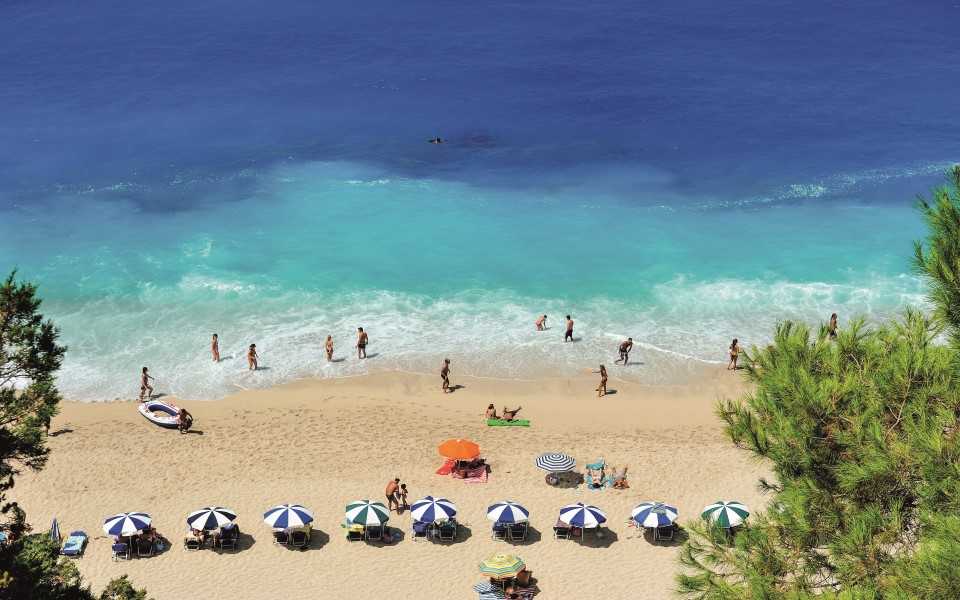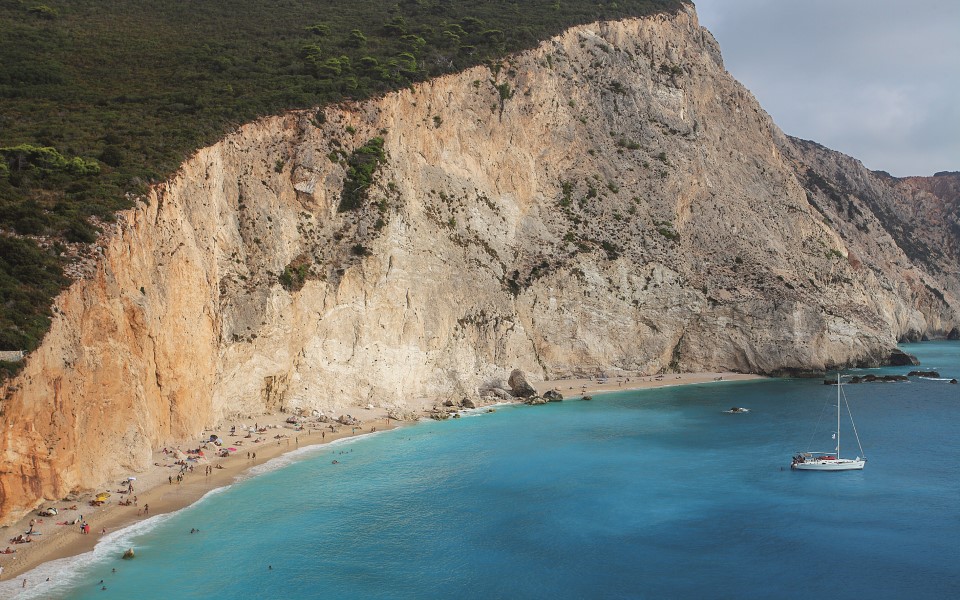“You can go wherever you want, I’m staying here forever,” I mutter to my friends, having just sunk my arms and legs into the fine pebbles of Egremni Beach. I don’t know how to describe the waters in front of me. Are they intense? Glowing, maybe? It’s like the right word doesn’t exist. A dedicated fan of the Aegean, I snubbed the calm waters of the Ionian Sea for the longest time. Until I visited Lefkada, and its rocky, award-winning, packed, unbearably beautiful western coastline.
Pefkoulia, Mylos, Kathisma, Gialos, Egremni, Porto Katsiki… It’s not a lie, or a myth, or an advertising gimmick. It’s not even an overstatement. Colors in their most absolute hue, almost phosphorescent, that beat any postcard hands down. White rocks in the foreground, green slopes higher up, blue waters, and crimson sunsets that blow you away. This is the main reason to come to Lefkada.

© Nikos Zacharoulis
Some prefer the north and the south of the island, Mylos and Vasiliki, famed for kitesurfing and surfing, respectively. Others prefer the east, where the bays are numberless, the hills are low and the vegetation is lush. Fishing boats, yachts, motorboats and sailboats all drop anchor here, between Lefkada and the Prigiponisia islands (Skorpios, Madouri, Skorpidi and Sparti). Kariotes, Lygia, Nikiana, Perigiali, Nydri are here, where tourism reaches its apogee with luxury hotels, rooms for rent, tavernas and restaurants, cafés and souvenir shops. Here are the elegant cosmopolitan seaside promenades, seemingly imported by Aristotle Onassis in the 1970s.
The other reasons for coming will become apparent to you in time, once you uproot yourself from the coast and take to the mountains, when you locate the beautiful gorge and the waterfalls of Dimosari, where you’ll wash off that sea salt with a dive into mountain pools. You’ll understand when you set eyes on the sunset from the legendary Lefkata promontory, or when you reach the high plain of Aghios Donatos and see old women in long skirts and scarves, bent over fields of the famous local Eglouvi lentils. When you go to Karya in the mountains, sit in the shady square and watch girls in traditional costume and with copper pots on their heads rehearsing for the annual traditional August wedding feast, you’ll know.

© Olga Charami
These are the surprises that await you in Lefkada, an offshore island connected to the mainland by a floating bridge, making it a driving destination. Lagoons, islets and narrow spits of land confuse the line between sea and shore, but the blurring of borders isn’t just geographical. Sometimes following the fate of the other Heptanese islands, and at other times attached to the Acarnanian towns of the mainland, Lefkada is the only Ionian island which has been both part of the Ottoman Empire and a protectorate of Western powers. Rumelia and its own Ionian brethren hold sway over it in equal doses.
That’s how you can find yourself eating savoro (fried fish) and frigadeli (lamb offal), mandolato (nougat), kontosouvli (skewered pork) and air-cured salami. You drink soumada (almond cordial) and rozoli (orange-cinnamon liqueur) as well. Walking through the alleys of the colorful town built out of corrugated metal to withstand earthquakes, you might hear the sounds of an accomplished brass band or Heptanesian kantades (serenades). Just imagine an August night in the alleyways, with a cool breeze, and the sun setting in the Gyra lagoon, as serenaders appear with guitars, mandolins, and accordions, wearing straw boaters and red scarves, and singing:
“Let’s go to Syvota, let’s go to Poros
Vassiliki gift of the summer breeze
Lefkada, my endless dream
join me in her arms.”












